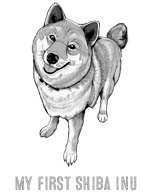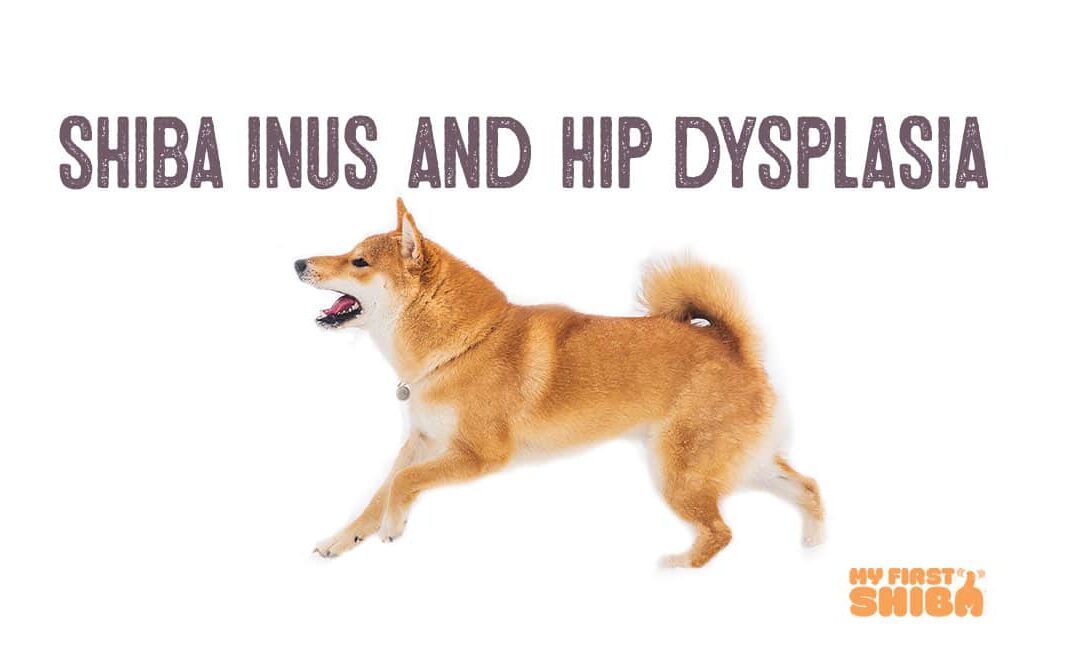On occasion, our posts contain affiliate links. However, we only recommend products that we truly believe in. For more information, visit my privacy policy page.

Hip dysplasia is among the inherited conditions that may affect the Shiba Inu breed.
Any purebred dog is going to have several conditions that they’re prone to, but responsible breeders and diligent pet parents can do their part to reduce the prevalence of inherited conditions.
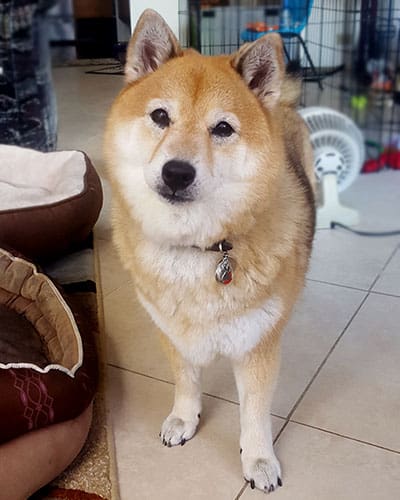
What Is Hip Dysplasia and Are Shiba Inus Prone to It?
The hip joint is a ball-and-socket joint. Dogs with hip dysplasia have an abnormal hip joint where the top of the femur (the “ball”) fits abnormally into the pelvis (the “socket”).
The hip joint is more lax than usual. Over time, the dog develops arthritis within the hip joint.
Hip dysplasia in Shiba Inu dogs is an inherited condition, which means dogs who develop hip dysplasia were genetically predisposed through the genes they inherited from their parents.
The condition occurs in young dogs, though signs can begin at any age. Some dogs with hip dysplasia may not have signs at all.
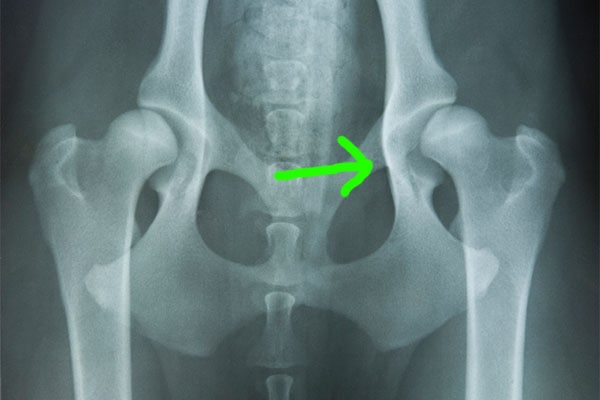
The Orthopedic Foundation for Animals (OFA) monitors inherited conditions in dogs. As of the writing of this article, the organization reports that 6.9% of the Shiba Inu dogs they’ve screened have hip dysplasia.
That means out of every 100 screened Shiba Inu dogs, around seven have hip dysplasia.
Outside of Shibas, the prevalence of hip dysplasia varies widely by breed. A 2017 study reported an overall prevalence of 15.56% in purebred dogs based on the OFA’s hip dysplasia registry. Depending on the breed, the prevalence can range anywhere from 0% to over 70%.
Keep in mind that these findings, both for Shibas and other purebred dogs, rely on the willingness of breeders and pet parents to get their dogs screened.
There may be a higher prevalence than reported because some individuals won’t screen their dogs.
Overall, hip dysplasia is more common in large and giant breed dogs.
Signs of Hip Dysplasia in Dogs
Signs of Shiba Inu hip dysplasia include:
A bunny-hopping gait
Limping or lameness in one or both hind legs
Difficulty getting up from a lying down or seated position
Exercise intolerance
A clicking sound when the dog gets up
Loss of musculature (atrophy) around the pelvis and hind end, especially in older dogs
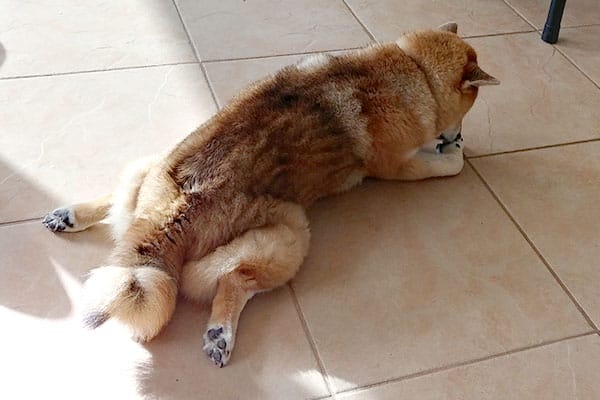
How Is Hip Dysplasia Diagnosed in Dogs?
Diagnosis of hip dysplasia usually begins with a full orthopedic examination performed by a veterinarian.
This exam will include the veterinarian feeling the entire musculature and joints of the dog for abnormalities and pain.
The veterinarian will also examine the range of motion for the joints and watch the dog’s gait.
In young patients, the veterinarian can also palpate the hip joint for a specific indicator of hip dysplasia called Ortolani sign. This involves manipulating the hip joint to see if the joint can be partially dislocated.
A positive Ortolani sign indicating likely hip dysplasia occurs if the veterinarian can hear or feel a clunk during the movement.
The veterinarian will take x-rays of the dog’s pelvis, including the hip joints. They can use the OFA radiographic protocol to subjectively evaluate the hip joints for hip dysplasia.
OFA evaluation should not be performed in dogs under 2 years old. For more objective evaluation of the hip joints, they can use a protocol called PennHIP.
PennHIP can be performed in dogs as early as 16 weeks of age.
Both protocols usually require the dog to be sedated for x-rays.

Does Hip Dysplasia Cause Pain for My Shiba?
Hip dysplasia is considered a painful condition for dogs.
If your Shiba has hip dysplasia and is showing signs, you can assume they have pain.
Some dogs may not act painful at the time of diagnosis, particularly if they haven’t developed arthritis yet.
However, just because they aren’t painful now doesn’t mean they won’t be painful in the future.
For some dogs, pain appears inconsistently and may be triggered by events like going for a run.
Is There a Way To Prevent Seizures in My Shiba Inu?
While seizures often cannot be prevented, there are certain medications and preventatives that your veterinarian will recommend avoiding as they can reduce the seizure threshold and make them more likely to occur.
Always remind your veterinarian of any seizure medications your Shiba may be taking so they can check for any potential interactions.
Seizures in your Shiba Inu can be very scary but most dogs with seizure conditions have a good prognosis with appropriate management.
If you ever suspect your Shiba may be having or has had a seizure, do not hesitate to contact your veterinarian for further guidance!

Thanks for visiting Myfirstshiba.com! We do our very best in providing our readers with awesome content about our beloved Shiba Inu breed. Some of our articles include reviews and recommendations to our favorite products. We do occasionally earn commissions from certain affiliate links that help support our work and mission. Thanks again for visiting. Shiba Kisses To All!
